
Photo of the Day: Spring Tides Happen
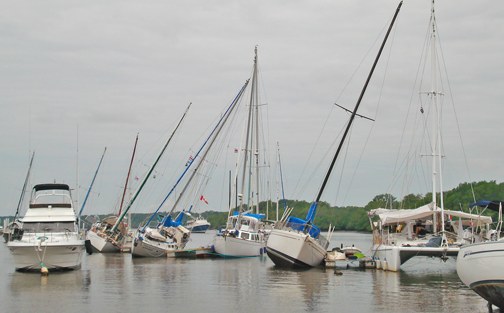
Rob and Linda Jones, Ha-Ha vets with their Gemini 3000 catamaran Cat’n About from Whibey Island, Washington, sent us the accompanying photo of what looks to be sailboats in Costa Rica knocked askew by hurricane force winds. But, in fact, the sailboats ended up the way they did because of another force of nature — a spring tide.
You could be excused for assuming that spring tides only occur during the spring, but they have nothing to do with the seasons. The correct explanation is that during new and full moons, the sun, the moon, and the earth form a line — a state known as syzygy — at which time the sun reinforces the moon’s effects on the tides, resulting in maximum tides. The opposite of this is a neap tide, during which time the moon is in the first or third quarter, and and sun and moon are separated by 90 degrees. When this happens, the pull of the sun partially cancels the pull of the moon, and the tides are at their least extreme.
The only thing more extreme than a spring tide is a perigean tide. The closer the moon is to the earth, the greater effect it has on the tides. Every 7.5 lunations, the perigee of the moon coincides with either a new or full moon, causing a perigean tide, which has the greatest range of all. When those occur, you want to have plenty of water beneath your keel.
Gitana 13 Comes Full Circle
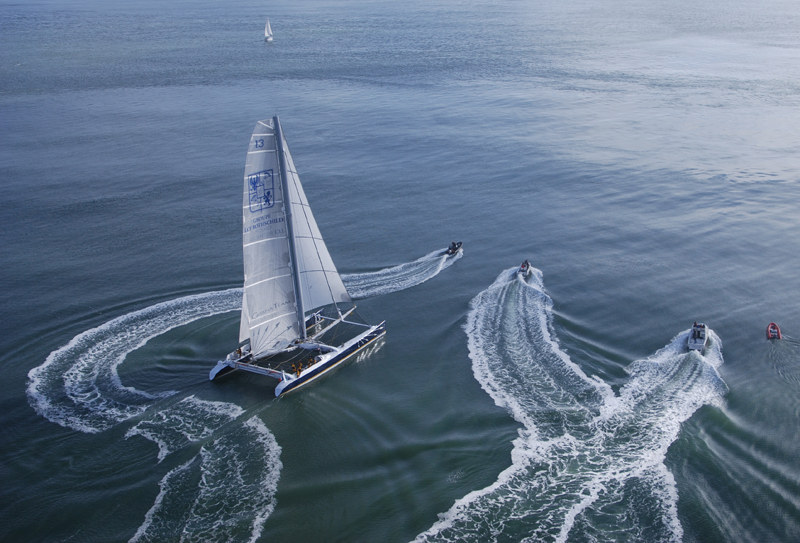
©2008 Latitude 38 Media, LLC
While most folks at Corinthian YC yesterday came to catch a glimpse of the 110-ft catamaran Gitana 13 and her 10-man crew, CYC member Jim Gibbs was there on ‘family business’. Seems that the ‘Route of Gold’ record the big cat had just reset was held for 135 years by the clipper ship Flying Cloud, and Gibbs’s great great grandfather ("There may be one more ‘great’ in there") was aboard! Israel Whitney Lyon and his two sisters were among 12 passengers on the ship’s maiden voyage in 1851, when she set a new record of 89 days, 20 hours for the 14,000-mile voyage. Three years later, she lowered her own mark to 89 days, 8 hours. That latter record stood for 135 years. Israel Whitney went on to great success selling tooth powder (early toothpaste) to 49ers. Jim was at CYC to honor the memory of great great (great?) grandad by checking out the latest sailing craft to make the arduous, non-stop journey around Cape Horn.
Though both powered entirely by the wind, the two vessels could hardly be more different. The 229-ft Flying Cloud was built to carry cargo and passengers, flew 30-some sails off three masts and was built almost entirely of ‘organic’ products — wood hull, cotton sails, hemp rope. The only wood on Gitana is perhaps a couple of stirring spoons in the galley. She is all aluminum and modern composites — foam, resin, carbon fiber, synthetic line — and lightly built for only one purpose: to go fast. This she does very well. Her new record of 43 days and change is less than half Flying Cloud‘s best, and a full two weeks quicker than the previous record set in 1998.
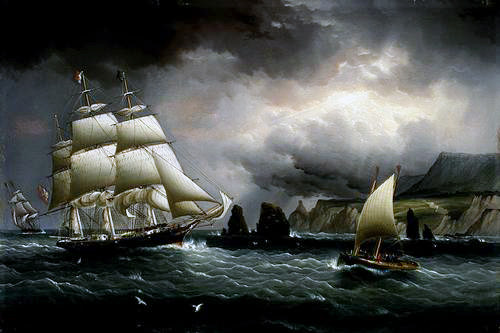
The Route de L’Or is the first stepping stone in a series of record attempts that will take the boat round the world. The next, which will commence later this month, is San Francisco to Yokohama, Japan, a mark set only three years ago by countryman Olivier de Kersauson on the 110-ft trimaran Geronimo.
Until then, Gitana 13 will be in the Bay Area. She is currently on a mooring off Corinthian YC, where you can sail by and have a look. (No boarding without permission, though!) Sometime soon, she will head to Alameda for haulout and routine maintenance. Then, when the weather window opens toward the end of the month, she will head out for Japan.
For more on Gitana 13, her new record, her crew or any aspect of the Gitana program, log onto www.gitana-team.com/en/.
March Latitude Hits the Streets
All over the Bay Area today, the March issue of Latitude 38 will be distributed to chandleries, yacht clubs and marinas. Spend the weekend reading about a record-breaking cat, a fun and fickle fiasco, a circumnavigator’s worst injury, and so much more.
Cocos Island Rumors Untrue
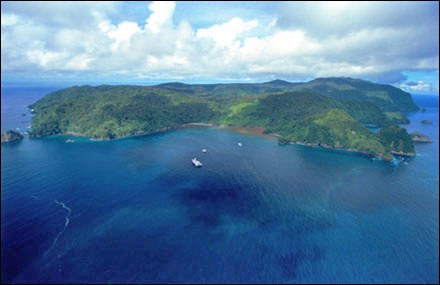
© Latitude 38 Media, LLC
"We dropped our hook here at Puerto Baquerizo Moreno at San Cristobal Island in Ecuador’s Galapagos Islands on February 22, and a short time later Belvedere’s Tom Perkins pulled in with his 289-ft Maltese Falcon," reports Bruce Balan and Alene D. Rice of the California-based Cross 46 trimaran Migracion. "We later went to an internet cafe and read the ‘Lectronic posting by Perkins about Costa Rica’s Isla del Coco. He’s right about the diving, as it’s the best that Alene or I had ever experienced. However, he’s wrong when he says that Cocos is the ‘world’s largest uninhabited island.’ People often say this, so I’m not sure how the rumor got started, but it’s completely false. Anybody who has sailed the Sea of Cortez knows that two-mile by four-mile Isla de Coco can’t be the largest uninhabited island in the world."
Bruce and Alene are correct. According to www.worldislandinfo.com, although Costa Rica’s Isla del Coco is said by many to be the largest uninhabited island in the world, nothing could be further from the truth. In fact, there are several hundred larger uninhabited islands, the largest being 21,000-square mile Devon Island in Nunavut, Canada.
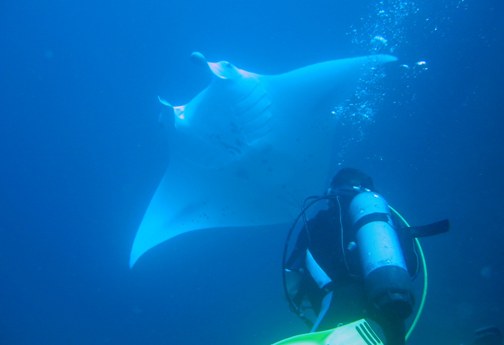
The good news from Bruce and Alene is that they will be staying in the Galapagos another month, which means that the authorities aren’t yet cracking down on how long yachties can stay.
